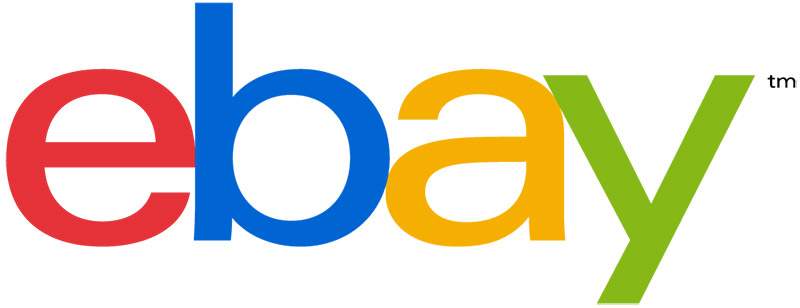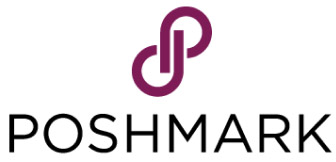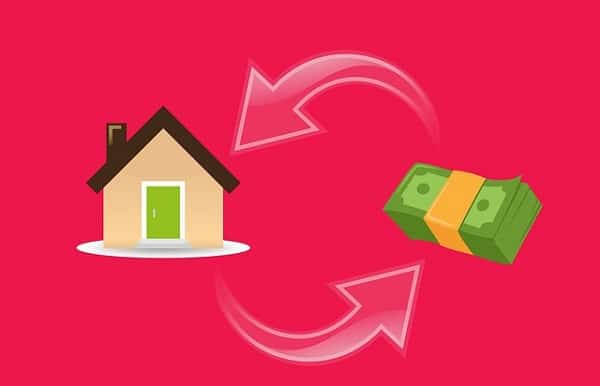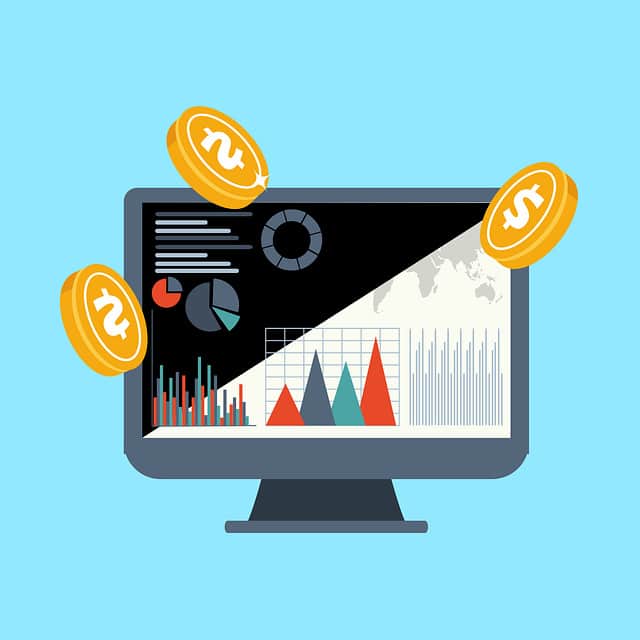Craigslist was founded in 1995 and became a well-known internet sensation by 2000, allowing people to buy, sell, and trade products and services in cities across the United States and Canada. With its simple interface – maybe a little too simple in the modern-day era of websites – and large user base, it’s easy to see why people rely on it as somewhat of an online flea market or yard sale.
However, Craigslist has its share of drawbacks, like safety concerns, a lack of buyer protection, and potential scams cloaked as real products or services. These issues have caused many to find alternative platforms for buying and selling, like Facebook Marketplace, Poshmark, and NextDoor. Learn more about these Craigslist alternatives, who they’re best for, and how they compare.
👉 Related: 12 Proven Ways To Make Money From Home
Top 10 Sites Like Craigslist
| Platform | Best For | Fees | Buyer Protection | Listing Method | Notes |
|---|---|---|---|---|---|
| Facebook Marketplace | General items | 5% for shipped items, none for local sales | Yes for shipped items | Direct communication with seller | Similar to Craigslist, best for local buying/selling |
| Worthy | Jewelry and watches | 10-18% of final sale | Yes | Auction | Focus on high-value items, hands-off selling process |
| eBay | Rare and collectible items | Varies by product | Yes | Auction or fixed price | Popular for rare items and collections |
| OfferUp | Local and shipped items | 12.9% for shipped items | Yes for shipped items | Local listings or shipped items | Primarily a mobile app, supports local sales |
| Poshmark | Clothing and accessories | Flat $2.95 or 20% of sale | Yes | Virtual closets | Community-driven shopping experience |
| ThredUp | Used clothing | $14.99 processing fee | Yes | Online retail style | Used clothing marketplace |
| Mercari | Variety of items | 0.50 + 2.9% buyer processing fee | Yes | Online listings or local | Caters to online and local sales |
| Depop | Branded clothing | 5% marketplace fee | Yes | Community-focused marketplace | Social marketplace with community features |
| NextDoor | Local community | None | No | Direct messaging | Emphasis on local community interaction |
| Vinted | Clothing, electronics, home goods | $0.70 + 5% buyer protection fee | Yes | Direct communication through platform | No seller fees, wide variety of categories |
Top 10 Sites Like Craigslist

When comparing Craigslist alternatives, it’s important to understand what each platform offers compared to Craigslist. For example, some marketplaces allow you to sell just about everything, while others focus exclusively on clothing and accessories. Some have numerous fees for sellers and others have little to no fees. Explore their differences below.
1. Facebook Marketplace

Of all the Craigslist alternatives we list here, Facebook Marketplace is probably the most similar. You can buy and sell most physical products on either one locally, although Craigslist also allows you to sell services, unlike Facebook Marketplace. Some of the best-selling items on Facebook Marketplace include furniture, clothing, and books.
With both platforms, you’ll respond directly to the post to communicate with the seller if you’re buying something locally, and buyers can do the same to communicate with you when you sell. This is how you’ll arrange a meeting time to pick up an item you buy or sell.
Of note, Craigslist is designed for local transactions. There’s no buyer protection if you buy an item from someone far away from you and request shipping. Meanwhile, Facebook Marketplace does allow sellers to list items for shipping and has buyer protections in place outside of local transactions (basically, anything you use the checkout process for).
As for fees, Facebook Marketplace doesn’t have any fees for local sales but does charge sellers with shipped items 5% of the final sale price or $0.40 for items costing $8 or less with shipping included. Craigslist is free for sellers for the most part, except for specific categories, like vehicles, services, and commercial real estate. Most fee-based listings are $5.
👉 Further reading: Facebook Marketplace vs Craigslist – What’s Best For Sellers?
2. Worthy

Worthy is an online marketplace specializing in jewelry, watches, and diamonds. Unlike Craigslist, which is more of a generalist platform for all types of sales and trades, from free to high-value, Worthy focuses only on high-value accessories and getting you the best price for your items.
Worthy operates in an auction format. You can send in the jewelry, watch, or diamond you want to sell on Worthy, and its gemologist team cleans and photographs your item for you to prepare it for sale. Then, the team places it in an online auction to get your item in front of professional buyers. You’ll get to choose a reserve price to ensure you get the price you want. Once your item sells, Worthy pays you via check, bank transfer, or PayPal.
With Worthy, there’s no listing of items yourself or communication with buyers, making it a much more hands-off selling process compared to Craigslist. However, Worthy does have fees ranging from 10% to 18% of the final selling price to cover its services. The higher the selling price, the lower your fee.
👉 Further reading: 10 Best Places To Sell A Wedding Ring
3. eBay

eBay was established in the same year as Craigslist, right around the time the internet was becoming a mainstream service for households. But eBay rivaled Craigslist with a whole new type of service, introducing the online auction where buyers could bid on products.
Now, eBay offers fixed-price listings as well as auctions, giving sellers more control over how they sell items. It’s an excellent place to find missing pieces of collections and rare items you can’t find in traditional stores, but you can buy and sell just about anything on eBay.
If you’re selling, expect to see more fees compared to Craigslist. The fee structure varies with different types of products, too, which can complicate things for sellers who list multiple types of products. Here’s a look at fees for common categories:
- Books and magazines: 14.95% on the total amount of the sale up to $7,500 calculated per item; 2.35% on the portion of the sale over $7,500
- Women’s handbags: 15% if the total amount of the sale is $2,000 or less, calculated per item; 9% if the total amount of the sale is over $2,000, calculated per item
- Athletic shoes: 8% if the total amount of the sale is $150 or more; 13.25% if the total amount of the sale is less than $150
👉 Further reading: Facebook Marketplace vs eBay – What’s Best For Sellers?
4. OfferUp

Think of OfferUp as the more modern mobile app version of Craigslist. It lets you buy and sell items in your area, but you can browse listings over 30 miles away. Read our OfferUp review to learn more.
The primary difference between the two is that OfferUp does have some shippable items backed with buyer protections. Buyers can enjoy a two-day purchase protection policy if the item they receive is incorrect, damaged, or not as described, or if they don’t receive an item. Sellers shipping items pay 12.9% of the item’s final price.
Similar to Facebook Marketplace, local listings on OfferUp are cash only, while you pay for shipped items through the OfferUp app or website using a credit or debit card. You can also ask sellers questions via the “Ask” button in listings.
👉 Further reading: Mercari vs OfferUp – What’s Best For Sellers?
5. Poshmark

Poshmark is an app mostly for buying and selling clothing and accessories, but sellers also use it for beauty products, home goods, and kids' items. Unlike Craigslist, which offers a barebones marketplace-style site, Poshmark encourages socialization and community. Sellers create virtual closets that buyers can like and follow, building a community around their listings. Poshmark’s fees are only for sellers, ranging from a flat $2.95 fee to 20% of the sale, depending on the amount of the final sale price.
Buyers can make offers for listed items or join live auctions hosted by sellers. As a buyer, you’ll pay directly through Poshmark and get your items shipped. You’ll also have three days to notify Poshmark if you’ve received a damaged or incorrect item to return the order and get a full refund.
👉 Further reading: Is Poshmark Worth It?
6. ThredUp

If you’re looking for gently used clothing and accessories, try ThredUp as an alternative to Craigslist. ThredUp accepts used clothing that’s clean and in good condition to resell for affordable prices. It functions much like an online apparel retail site, except it only lists vetted, used clothing.
You can also send ThredUp your used items to earn credit toward your ThredUp purchases. ThredUp keeps just $14.99 from your earnings to cover its services, which include evaluating, photographing, and pricing every piece.
👉 Further reading: Poshmark vs ThredUp for Sellers
7. Mercari

Because it lists a wide variety of items, Mercari often gets compared to OfferUp and Craigslist, although there are a few key differences to note.
OfferUp is more like Craigslist in that it caters to local sales, while Mercari focuses more on online listings. However, you can use Mercari Local to search solely for local items to buy in person. Also, unlike OfferUp and Craigslist, Mercari dropped its listing fees for sellers in March 2024. However, buyers pay a payment processing fee of $0.50 plus 2.9% of the transaction.
👉 Further reading: Mercari Selling Fees (Ultimate Guide For Sellers!)
8. Depop

Depop is an online marketplace for men’s and women’s clothing. It hosts items from top brands like Adidas, Levi’s, and Nike. Because it’s half social community, half marketplace, it has a lot of similarities to Poshmark in that you can follow your favorite shops and like your top items. You can purchase items directly from a seller on Depop to get them shipped to you.
Depop removed all selling fees for sellers in July 2024. Now, buyers get charged a marketplace fee of up to 5% of their transaction plus up to a $1 fixed fee. Sellers only pay a payment processing fee of $0.45 plus 3.3% of the total transaction.
👉 Further reading: Depop vs Poshmark For Sellers – The Ultimate Guide
9. NextDoor

Nextdoor is like a modernized Craigslist with a more social aspect. Members can join their local communities to post about things happening in their neighborhood and find others who live near them. Once you’re signed up, you can create listings of items for sale or browse listings from others in your neighborhood or the surrounding areas. You’ll communicate with sellers and buyers via Nextdoor’s direct messaging system.
Like Craigslist, Nextdoor prioritizes local shopping rather than shipping and strongly discourages people from shipping their items, as there are no buyer protections in place.
👉 Further reading: 8 Best Websites To Sell Stuff Locally
10. Vinted

An online marketplace mostly for clothing and accessories, Vinted also hosts listings for kids’ items, electronics, pets, and home goods. If it’s pre-owned and in decent condition, you can probably sell it on Vinted.
Vinted connects payments directly through its website and app, so you can shop and buy right through the marketplace. Buyers can contact Vinted within two days if their order was incorrect, incomplete, damaged, or missing to receive a full refund. Sellers have no fees, and buyers only pay a buyer protection fee of $0.70 plus 5% of the item price.
👉 Further reading: 15 Best Places To Sell Shoes For Cash
Tips for Shopping on Online Marketplaces

Online marketplaces can help you find items you love without limiting yourself to a specific geographic area, but it’s important to shop wisely on them to protect your cash. Here are a few tips to keep in mind:
Research the seller: If you’re able to learn more about the seller, do so. For example, on Depop and Poshmark, you can visit a seller’s shop to learn more about them and their past sales. Ratings from previous customers can also help you distinguish reliable sellers from others.
Use secure payment methods: Some online marketplaces have secure payment systems so you can buy items online safely. Others, like Craigslist, are designed more for local buying and selling with cash, so you won’t have any protections on your side if you give a seller your credit card information.
Meet in public if buying locally: Look for a public place to meet a seller from an online marketplace. Many police stations have safe meet-up spots for this purpose.
Verify and inspect items before paying: Before you give a local seller your cash, look over the item to ensure it’s what you wanted and is in working or usable condition. You’re free to walk away without paying if you decide it’s not right for you.
Read up on popular scams: Stay aware of any current marketplace scams circling your area or across the country. Nextdoor is a good place to chat with others about scams to watch for to keep yourself protected.
Only communicate on the platform: If an online marketplace offers a messaging system to communicate with a seller, keep your conversations on the platform. This way, if any problems arise that are covered by buyer protection, you’ll have proof in one place.
Don’t share personal information: Avoid sharing your address, financial information, and any other personal details with sellers.
Trust your instincts: Your gut can tell you a lot. If something doesn’t feel right about a seller or listing, trust that feeling.
Finding the Perfect Craigslist Alternative
Craigslist might be one of the first of its kind, but since its founding, several other online marketplaces have risen in popularity. While Craigslist can still be a go-to for finding affordable or free items in your area, alternatives like eBay, Vinted, and Facebook Marketplace can help you expand your search to other cities and states if you can’t find what you’re looking for near you.
To find the right marketplace, think about what you’re looking for. Do you need a gently used couch for your living space? Craigslist, Facebook Marketplace, and Nextdoor could be good options. Do you want to look for your favorite NBA player’s latest shoes? eBay is probably the best option. And if it’s clothing you’re after, places like Poshmark, ThredUp, and Vinted are usually the top places to visit. If you’re selling, consider each marketplace’s most popular items and selling fees to find the right spot.
Keep each online marketplace in this guide bookmarked to have a good mix of places to visit when you want to shop or sell.
Continue reading:






